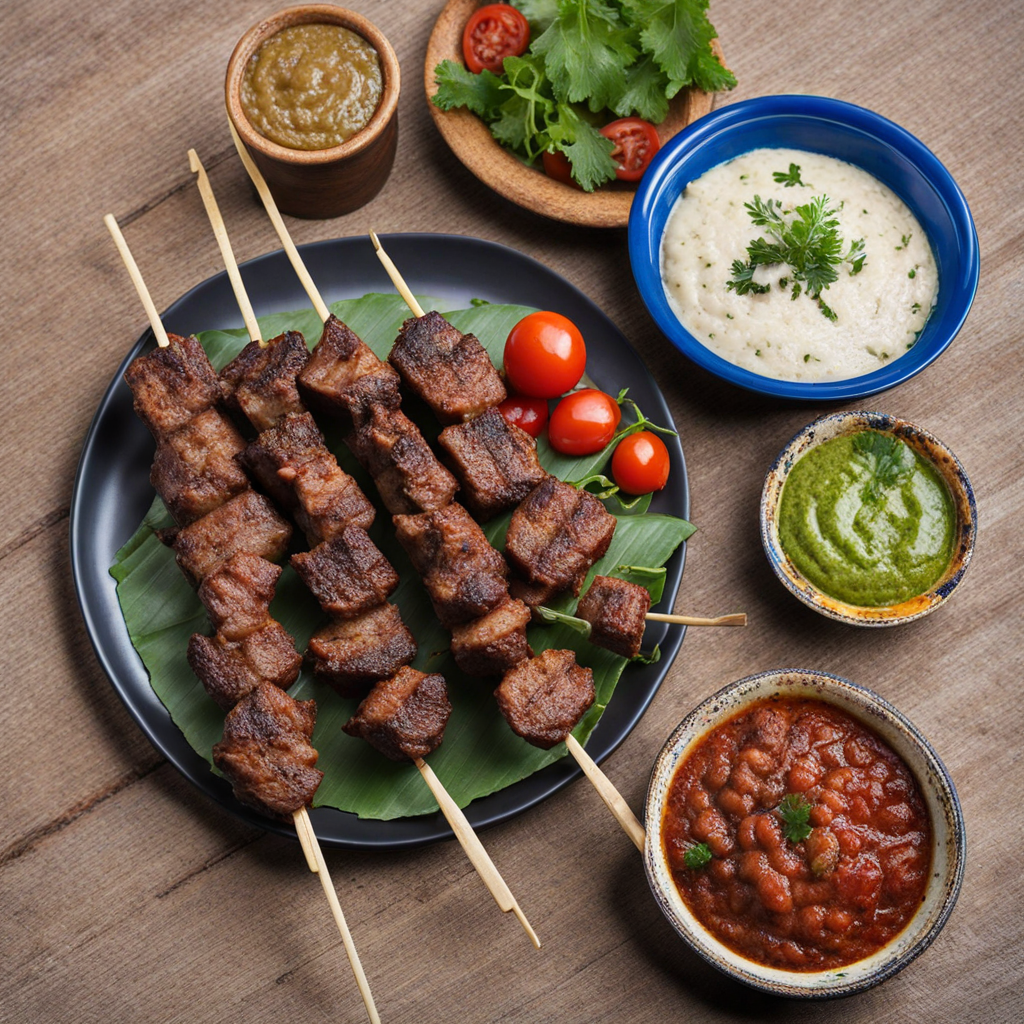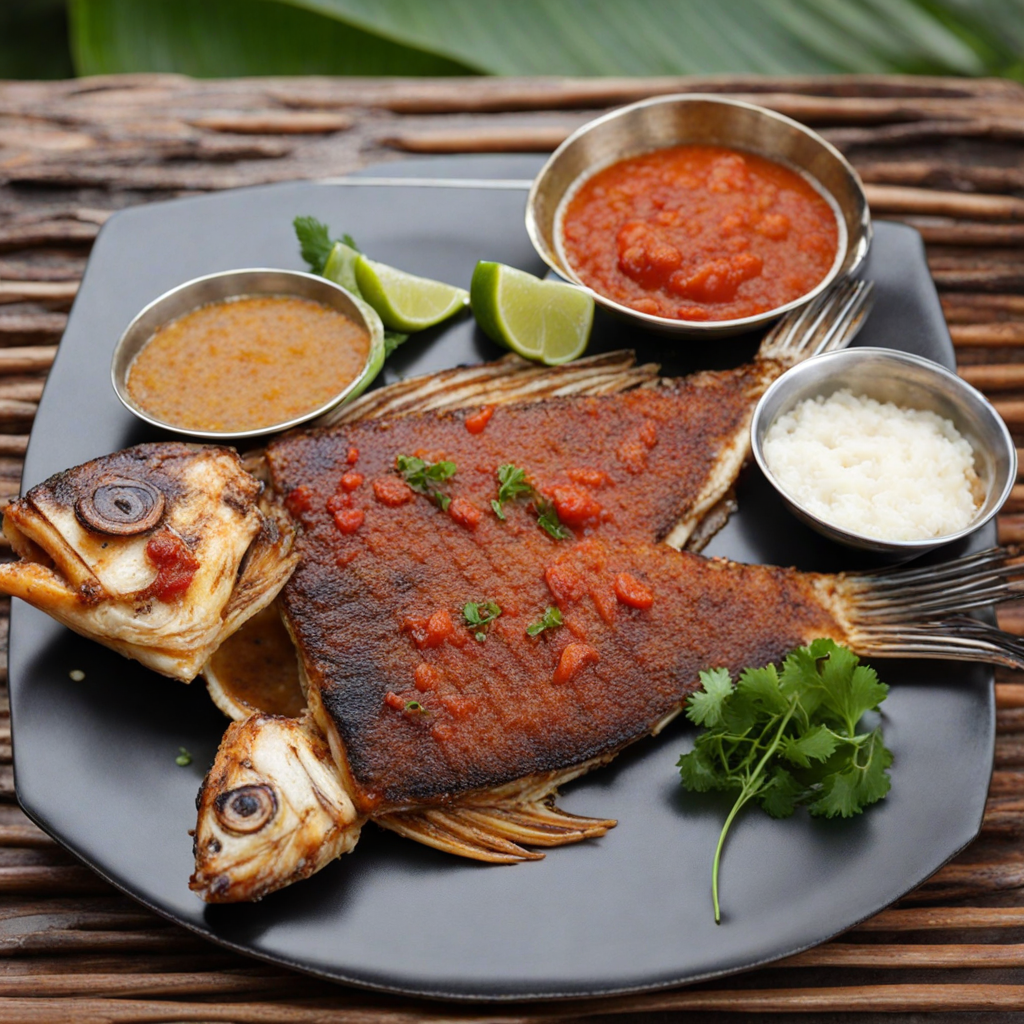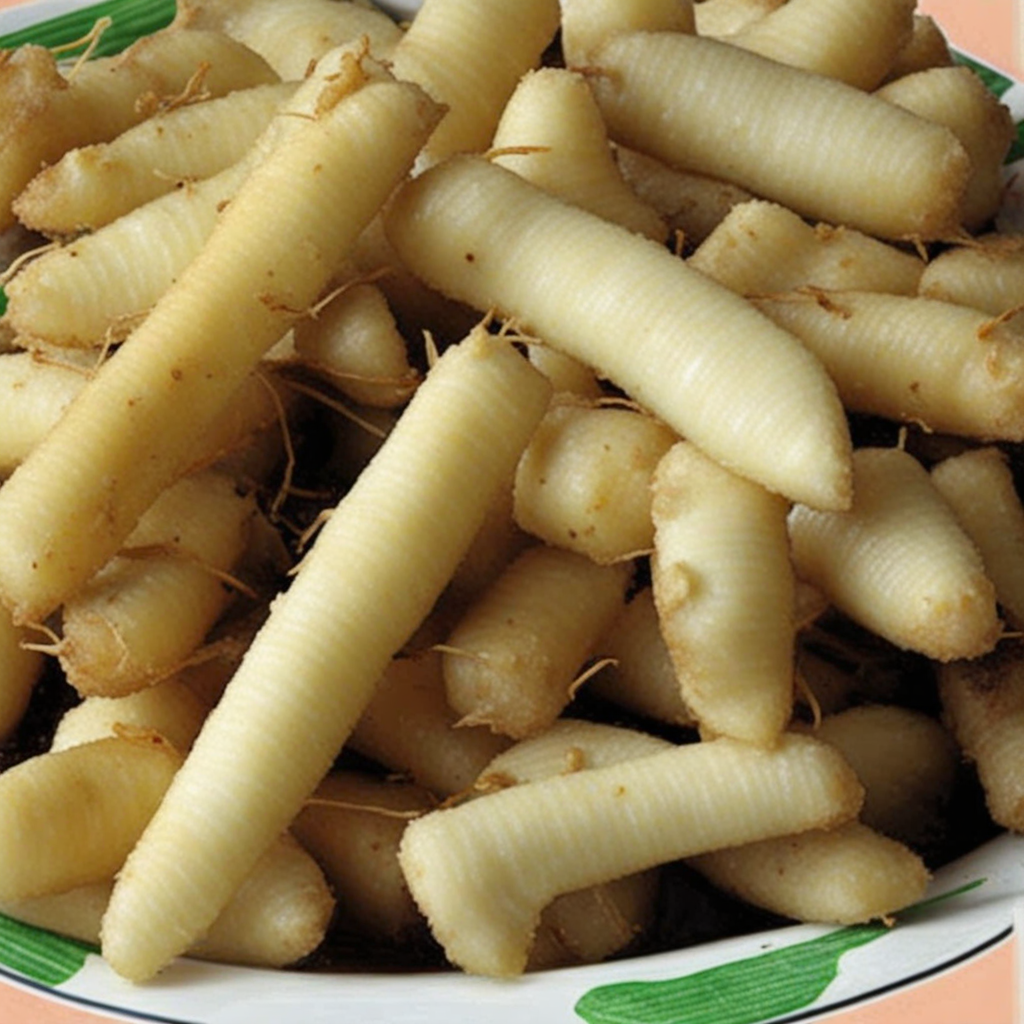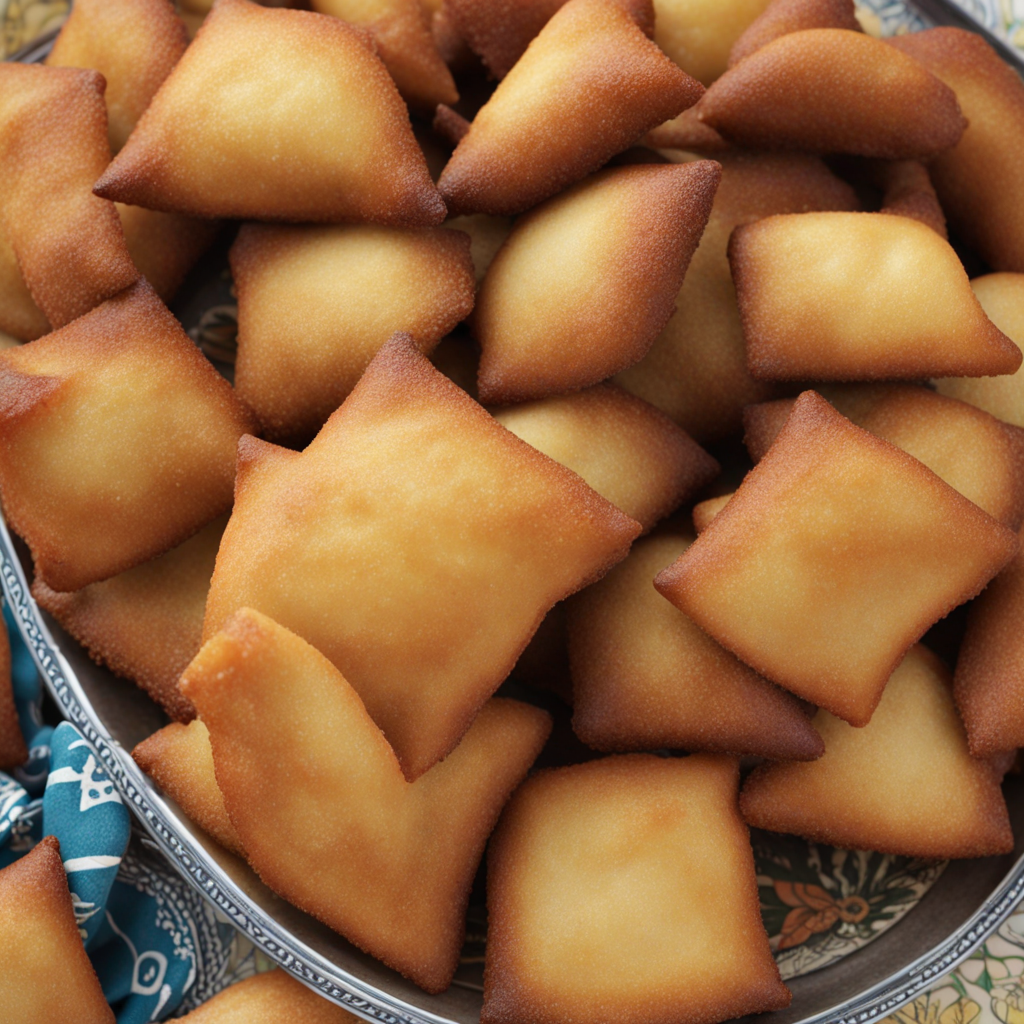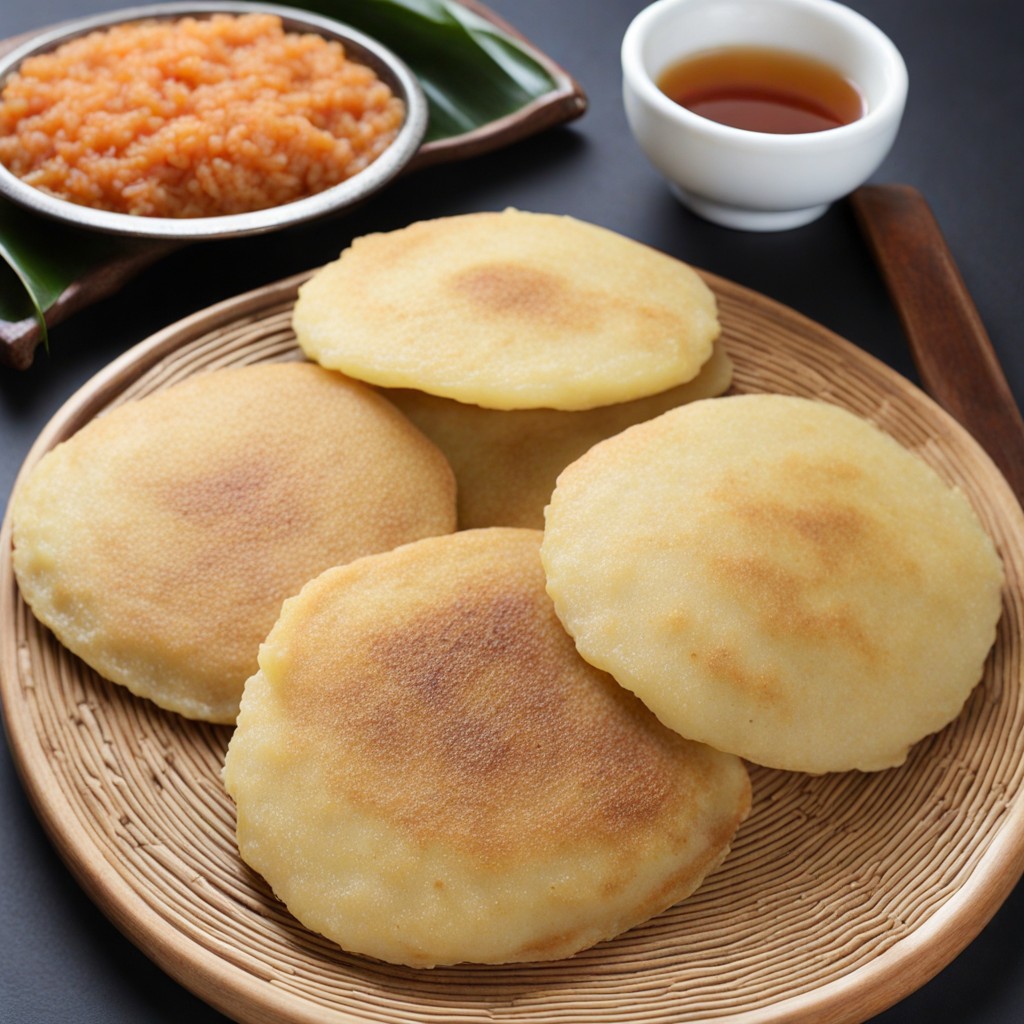Mishkaki
Mishkaki is a delightful Tanzanian street food that captures the essence of the country’s vibrant culinary scene. These skewers, typically made from marinated cubes of meat, are seasoned with a blend of spices that may include cumin, coriander, and chili, offering a tantalizing taste that is both savory and slightly spicy. The marination process infuses the meat with rich flavors, ensuring every bite is juicy and aromatic. Commonly made with beef, chicken, or goat, Mishkaki is grilled over an open flame, which adds a smoky char that enhances its deliciousness. The preparation of Mishkaki is a social affair, often enjoyed during gatherings and celebrations. Vendors can be found throughout Tanzanian cities and towns, where they serve the skewers hot off the grill, accompanied by a variety of sides such as ugali (a maize porridge) or kachumbari (a fresh tomato and onion salad). This dish is not just about the meat; the accompanying sauces, often made from spicy chili or tangy lemon, elevate the overall experience and add an exciting zing that complements the richness of the grilled meat. As you take a bite of Mishkaki, you’ll experience a delightful combination of textures and flavors—the tender, succulent meat contrasts beautifully with the crispy edges, while the spices awaken your palate. It is often served as a quick snack or a hearty meal, making it perfect for food lovers looking to explore the street food culture of Tanzania. With its rich flavors and communal spirit, Mishkaki is not just a dish; it’s an invitation to savor the warmth and hospitality of Tanzanian cuisine.
How It Became This Dish
The Flavorful Journey of Mishkaki: A Tanzanian Culinary Delight #### Origins of Mishkaki Mishkaki, a delicious skewered meat delicacy, has its roots deeply embedded in the rich tapestry of Tanzanian culture. The term "mishkaki" is derived from the Swahili word for "skewers," and while its exact origin is somewhat nebulous, it is widely believed to have been influenced by various culinary traditions that have traversed the East African coast over centuries. Historically, the Swahili coast was a bustling hub of trade and cultural exchange, where Arab, Indian, Persian, and Portuguese influences melded with indigenous African practices. This resulted in a vibrant mix of flavors and techniques, and mishkaki is a prime example of this fusion. The skewered meat was likely introduced by Arab traders who brought with them their culinary techniques and spices, which were then adapted by local populations. Meat has always held a significant place in African culinary traditions, often associated with celebrations, feasts, and communal gatherings. In Tanzania, mishkaki has become a popular street food, easily accessible and enjoyed by people from all walks of life. Skewering meat not only makes it convenient for cooking and eating but also allows for the infusion of flavors as the meat is seasoned with spices and marinades before grilling. #### Cultural Significance Mishkaki is more than just food; it is a cultural symbol of togetherness and community. In Tanzania, it is often enjoyed during social gatherings, festivals, and family celebrations. The process of preparing and sharing mishkaki fosters a sense of camaraderie, as friends and family come together to grill the skewers, share stories, and savor the flavors. The dish plays a significant role in Tanzanian street food culture. Vendors can be found throughout urban centers, particularly in Dar es Salaam, where the sight and aroma of grilling mishkaki draw in passersby. This accessibility has made mishkaki a beloved staple for both locals and tourists, serving as a culinary ambassador that showcases the vibrant food culture of Tanzania. Mishkaki is also a versatile dish, with variations that reflect the diverse influences of the region. Depending on the community or the vendor, mishkaki can be made with different types of meat, including beef, chicken, goat, and even fish. The marination process often incorporates local spices such as ginger, garlic, and chili, creating distinct flavor profiles that vary from one vendor to another. #### Development Over Time As Tanzania has evolved, so too has mishkaki. Initially, the dish was primarily associated with casual dining and street food culture. However, with the rise of culinary tourism and a growing interest in Tanzanian cuisine, mishkaki has recently gained recognition in more upscale restaurants and international food scenes. In the late 20th and early 21st centuries, Tanzania experienced a surge in tourism, leading to a renewed interest in its culinary heritage. Mishkaki, once considered simple street food, began to be featured on menus in restaurants catering to tourists seeking an authentic Tanzanian experience. Chefs started to experiment with the dish, incorporating gourmet techniques and unique flavor combinations while still honoring traditional methods. Furthermore, the globalization of food culture has led to the spread of mishkaki beyond Tanzania's borders. As diaspora communities around the world seek to preserve their culinary heritage, mishkaki has found its way into international food festivals and cultural events. The dish has been embraced by food enthusiasts seeking to explore the rich flavors of East African cuisine. In addition to its culinary evolution, mishkaki has also become a symbol of national pride. Tanzanian chefs and food ambassadors have sought to elevate the dish on the global stage, showcasing it as an integral part of Tanzania's cultural identity. Collaborative efforts, such as food festivals that celebrate Tanzanian cuisine, have helped to promote mishkaki as a dish that tells the story of the nation's diverse history and multicultural influences. #### The Contemporary Mishkaki Experience Today, mishkaki remains a beloved and integral part of Tanzanian food culture. The dish is often enjoyed with a side of ugali, a staple maize porridge, or kachumbari, a fresh tomato and onion salad that adds a refreshing contrast to the savory skewers. The combination of flavors and textures creates a harmonious meal that reflects the essence of Tanzanian cuisine. Moreover, the rise of social media and food blogging has further propelled the popularity of mishkaki. Food enthusiasts share their experiences, recipes, and creative interpretations of the dish, fostering a sense of community among those who appreciate Tanzanian cuisine. As a result, mishkaki has transcended its humble origins, becoming a beloved dish that resonates with both locals and those from afar. The continued evolution of mishkaki serves as a testament to the adaptability and resilience of Tanzanian culinary traditions. As the world becomes increasingly interconnected, the dish stands as a symbol of cultural exchange and appreciation. Whether enjoyed as a quick snack from a street vendor or as part of a gourmet dining experience, mishkaki embodies the flavors, stories, and traditions of Tanzania. #### Conclusion Mishkaki is more than just a dish; it is a celebration of Tanzania's rich culinary heritage, cultural diversity, and communal spirit. From its origins as a simple street food to its contemporary status as a beloved national dish, mishkaki reflects the dynamic interplay of influences that have shaped Tanzanian cuisine over centuries. As the world continues to embrace global flavors, mishkaki stands ready to captivate the palates and hearts of those who seek to experience the vibrant essence of Tanzania.
You may like
Discover local flavors from Tanzania


